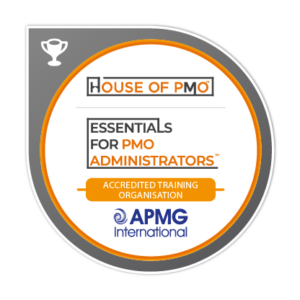
When Setting Up a PMO, it can be difficult to get to grips with the many aspects to consider – from developing the framework to stakeholder engagement all the way through to rollout, there is a lot to take into account. Here, PMO Learning can help.
Our Setting Up a PMO two day course seeks to walks you through the practical steps in the set up of a PMO. Delegates will benefit from a raft of tools, techniques and templates to establish a consistent approach to project management within their organisation. The course also covers Programme Office and Portfolio Office as an extension as the roadmap can be used for the set up of these types of PMOs too.
We’ll be taking a look at what resources you will need to successfully implement a PMO, which we can break down into three key resources – people, processes and technology.
People
When establishing a PMO within an organisation, we need to understand exactly what the service will provide – what exactly will the role of PMO be? What level of service will the PMO provide? What skills will be required to deliver it?
This is where People come in. Those setting up the PMO might use various methods to understand what services, and therefore what skills, will be required for the new PMO. They may develop an understanding of the skills they currently have within an organisation and limit the services of the PMO accordingly.
Alternatively, they may agree what services the PMO will deliver, and ensure the organisation is able to provide the people with those skills. This may cause a delay in the implementation of the PMO – in order to ensure the organisation is able to deliver these services at the correct level, training, or even recruitment, may need to be undertaken in order to do so.
The skills required for those working in the PMO will vary depending on the services provided, but may include Microsoft Office competency, reporting skills, presentation skills, data interpretation skills (for example, will they need to interpret raw data, will data be presented in graphs which will need to be extracted, will the data be presented in a pictorial format?)
A further important aspect to consider when implementing a PMO, is the skills of those in the supply chain. Often, if we commit to deliver a service, we may inadvertently be committing other people in assisting us in providing that service.
For example, if the PMO commits to delivering monthly reports they are also committing Project Managers to supply the information required on a monthly basis. As such, whilst it is important the PMO has the correct skills, it is also vital to ensure that those within the supply chain (whether internally or externally), are skilled enough to enable the PMO to provide the correct level of service, e.g. training Project Managers in delivering consistent projects plans with enough reportable data to produce monthly reports in the required format.
The level of skill of those within the PMO and the wider organisation will directly impact the level of service the PMO is able to provide, and potentially determine if they are able to deliver the service at all.
Processes
These skills provided by those within the PMO and wider organisation need to have documented processes within the Operating Manual of the PMO to ensure that there is a consistent approach.
Let’s take the example of monthly reporting – in order to apply a consistent approach to these reports, there needs to be detailed documented processes for communication with Project Managers, what data will need to be collated, how the data will be presented (and who is responsible for this presentation), at what time of the month will the report be released (last day of the month? Last Friday of the month?) It is also important to include the quality criteria, and any other important information that may impact the service level agreement.
Technology
Certain processes delivered by the PMO may be better delivered by systems or technology used to support them.
Again, let’s take the example of monthly project reporting. It may be more effective and efficient to provide a central planning tool for Project Managers to contain their plans centrally, allowing the PMO to extract the information needed, without active input from the Project Managers. Whilst this may save time, it is important to offset that time saving against the cost of implementing the technology, the time and money required to upskill the Project staff to use the tool, as well as the potential upskill needed for PMO staff to extract the data.
Furthermore, there must be processes which specifically detail the use of such tools to ensure a consistent approach.
Whilst there is a lot to cover when implementing a PMO, these key resources are a vital component and require us to look beyond the PMO, and observe how the wider organisation will need to adjust to allow the PMO to provide the right type, and right level, of services.
If you’re looking at Setting Up a PMO within your organisation – why not take part in our two day virtual classroom course with live instructor? By the end of the workshop, delegates will be able to understand the role of a PMO, understand the components of Governance of Project Management, have explored the PMO Implementation Roadmap, and be able to determine a Roadmap for their own organisation.
Enjoying Our Blog?
Sign up and receive all our articles (we’ll send you an update once a week!) plus special offers and events:















